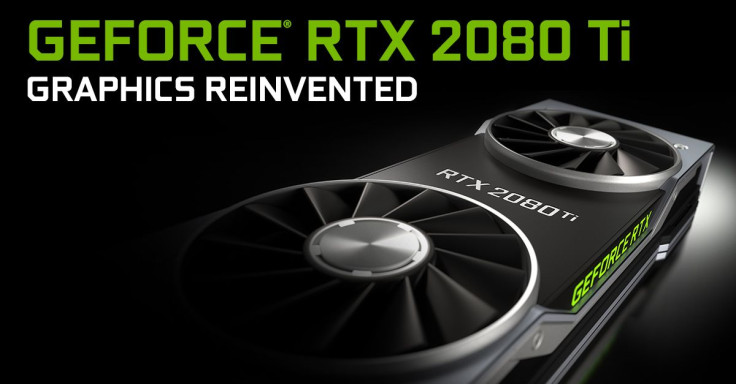Summer is a great time in the year to build – or just upgrade – a new PC. Besides the thousands of good deals spread throughout the internet on various hardware to keep your gaming rig in tiptop shape, it’s also that time of the year when the platform’s biggest storefront, Steam, announces its yearly Summer Sale, which sees a huge chunk of its library get outrageously low prices for two weeks.
Of course, some of these games you may end up buying are relatively new, which could mean strain on your existing computer. It’s therefore in your best interest – if it wasn’t on your plans already – to try and keep up with the curve by focusing on newer graphics cards, preferably with various deals that won’t break your wallet.
Fortunately for you, we’ve got just the thing, and as one discerning PC gamer to another we have here some of the best deals on the best mid-range graphics cards available on the market today.
Mid-range?
If you’re new to this, then you should know that mid-range in PC gaming always aims for a resolution of 1080p running at 60 fps. As AMD and Nvidia are currently battling it out now in a very competitive mid-range market, you’ll find that the selection for graphics cards at this level is very competitively-priced as well.
Is it within my budget?
All of the graphics cards here are capable of running mid-range setups, priced from $180 to $280. They can fit in any new mid-range setup, with a budget ranging from $1000 to $1300.
When do I need to upgrade again?
Getting some of these cards can basically keep you up and running for two to three years, depending on your other hardware such as processors and RAM. Of course, spending at a much higher price pushes that rate up farther, but for an investment in the here and now, mid-range graphics cards can be amazing purchases.
Now that that’s settled, let’s take a look at some of the best mid-range graphics cards on the market.
NOTE: If you buy something through this post, Player.One may get a share of the sale.
AMD
Sapphire Radeon Pulse RX 580 8GB
It might be quite small, but Team Red’s cheapest offering into the world of mid-range gaming can pack quite the punch. The RX 580 has always been a gold standard when it comes to price-to-performance ratio, something which you’ll see Nvidia struggle with quite a bit. The Sapphire Radeon Pulse RX 580 boasts 8GB of VRAM, a boost clock of up to 1366 MHz, and is completely VR-ready, with two slots for HDMI, one for DVI and two DisplayPorts.
This card is also very amazing for Hackintosh builds, as you’ll see it recommended frequently on various forums. If you’re torn on gaming and finding a compatible graphics card for your next Hackintosh build, then this might be the one for you.
MSI Gaming Radeon RX 580 8GB Armor Mk2 OC
This one’s a bit more expensive than Sapphire’s entry, but it also has better thermals through a well-designed shroud, and some nifty overclocking modes out of the box. The MSI RX 580 Armor Mk2 OC features three boost clock modes: 1380 MHz on OC mode, 1366 MHz on gaming mode, and 1340 MHz on silent mode. It comes packed with the standard 8GB of VRAM, has built-in compatibility with DirectX 12 and is VR-ready with all the ports needed.
The card also supports multi-monitor setups, which is great if you’re looking into something like streaming or just plain gaming.
Coming back down to the $180 range and we have ourselves a Dual BIOS card, which is an absolute must if you’re also gunning for doing a bit of crypto-mining on the side. The XFX Radeon RX 580 8GB is engineered for the enormous pressures of bitcoin mining, which is translated into a longer shelf life if you’re just planning to game on it. It also boasts some very crazy clock speeds for its factory OC settings, including a True Clock of 1366 MHz and 1386 MHz OC+.
While it does tend to run a bit hotter, and you may need to tinker around with fan settings a bit, it’s an amazing card that can run dual purposes for those who know how to make the best of it.
Sapphire Radeon Nitro+ RX 590 8GB
If you want to kick it up a notch from the RXX 580, but you don’t want to pick Nvidia either, then the RX 590 is an amazing choice. You will often find deals where some of the models are even cheaper than RX 580s, which can be an amazing find, like this Sapphire Radeon Nitro+ RX 590. It boasts a very impressive boost core clock of 1560 MHz and 8GB of VRAM to boot. Like the previous entry from XFX, it also boasts Dual UEFI BIOS modes.
The RX 590s are also great entry points to 1440p gaming, which is a sweet spot for players who have frames to spare, but don’t want to drop a ton for 4K yet.
Gigabyte Radeon RX 590 Gaming 8GB
Thermals are basically the thing to look out for the most when it comes to AMD cards, and to that end it’s always good to look out for cards with great thermal solutions. Gigabyte’s Radeon RX 590 boasts two of their Windforce fans, stylized with a 90mm blade fan design for some of the best air-cooled heat dissipation solutions found in this lineup of cards. The card also comes built in with the AORUS engine, plus Fusion 2.0 RGB, which allows you to synchronize with other Aorus RGB devices on your system.
It doesn’t lack for proper factory OC modes as well, with a core clock gaming mode at 1545 MHz and a core clock OC mode of 1560 MHz.
Nvidia
Gigabyte GeForce GTX 1660 OC 6GB (2x Windforce)
Here we have our first entry for Team Green, Nvidia, and their recently released GTX 1660 series of cards. The 1660s are meant to be refreshers for the previous 1060s, which were previously one of the best mid-range cards available. The Gigabyte GeForce GTX 1660 OC isn’t too shabby as an entry-level card either, boasting a base clock of 1530 MHz and an absolutely absurd boost clock of up to 1830 MHz.
For those overclocked modes, you’ll also need a competent air-cooled solution, which this card has with its two Windforce alternate spinning fan systems.
ZOTAC Gaming GeForce GTX 1660 AMP 6GB
The AMP series from ZOTAC has always been one of the best choices if you’re looking for the highest clock speeds of any lineup, and this one is no exception. The ZOTAC GeForce GTX 1660 AMP features a whopping boost clock of 1845 MHz, backed by its super compact and incredibly well-built design.
The cooling solution isn’t half bad either, with the card making use of ZOTAC’s proprietary IceStorm 2.0 cooling and a wraparound backplate for better heat dissipation.
EVGA GeForce GTX 1660 XC Ultra Gaming 6GB
When it comes to graphics cards, you can always count on EVGA to deliver very solid offerings, especially as you climb into higher price points. The EVGA GeForce GTX 1660 XC Ultra is an amazing pickup mostly due to brand name, but to sweeten that deal you get a boost clock of 1845 MHz as well.
Another selling point of EVGA cards is its quiet performance even under load, and this card is no exception. The all-new HDB (hydraulic-dynamic bearing) fans ensure increased cooling performance at a fraction of the noise.
Gigabyte GeForce GTX 1660 Gaming OC 6GB (3x Windforce)
If you’re in the need for something much beefier when it comes to thermal solutions, then a solid 3-fan card might do the trick. The Gigabyte GeForce GTX 1660 Gaming OC is one such card, boasting three Windforce fans and a ridiculous boost clock of 1830 MHz.
Of course, with better thermal solutions comes more headroom for overclocking, and this card is amazing if you’re familiar with the ins and outs of OC to make the most out of your build.
EVGA GeForce GTX 1660 Ti SC Ultra Gaming 6GB
If you’re finding that a GTX 1660 or the RX 590s were still quite lacking, then you can go up another tier higher should your budget allow it. The EVGA GeForce 1660 Ti SC Ultra Gaming is one of the cheapest 1660 Ti’s available, but offers significant enough headroom for higher clock speeds through smart overclocking. Out of the box, this card offers a real boost clock of 1845 MHz, which can be furthered thanks to its amazing cooling solutions.
The most significant leap, however, is the 1660 Ti’s use of GDDR6 memory, instead of the GDDR5 available for all the other entries on this list. If you have a bit more wiggle room in your budget, then this is the best card to grab out of all the choices presented.
So, what do you think? Which cards will you be checking out? Let us know if you want to see more of the best cards at even higher or lower price points, and we'll be sure to give you the best deals and choices available.

















